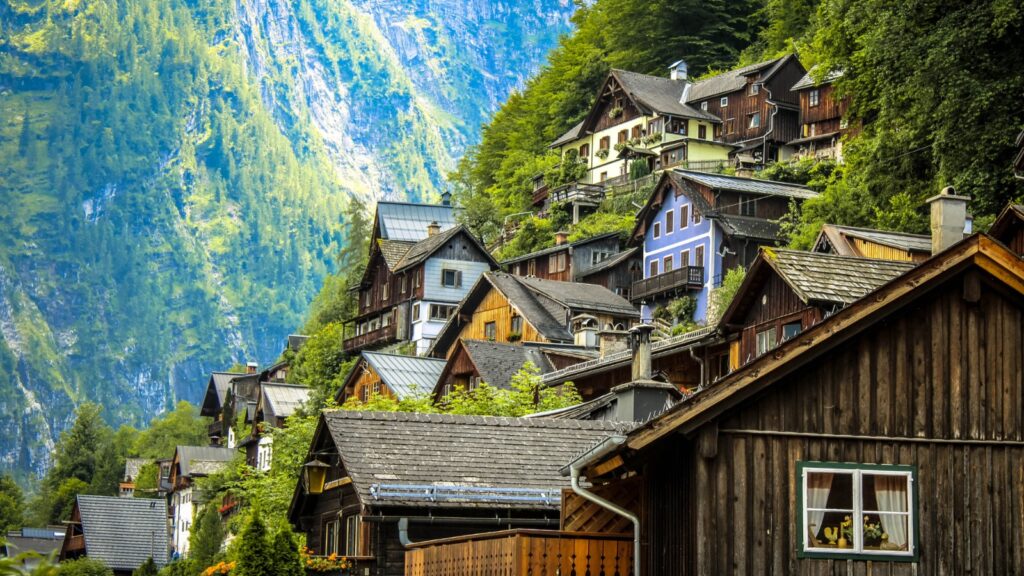Rome feels like a living museum, brimming with stories just waiting to be uncovered. Let’s explore...
Travel Guides
Austria offers something for everyone, whether you’re skiing in the winter or enjoying festivals and hiking in the summer. The best time to visit depends on the activities you’re after. For winter sports enthusiasts, December through March is ideal, while spring and fall offer pleasant weather for sightseeing and outdoor adventures. Discover the perfect time for your Austrian getaway.


The best time to visit Austria is during the spring and fall months (April–May and September–October) when the weather is mild, the landscapes are at their most beautiful, and the crowds are thinner than in peak summer.
These shoulder seasons are perfect for sightseeing, hiking, and exploring cities like Vienna and Salzburg at a relaxed pace.
If you’re looking for skiing and festive markets, December through March is the prime season for winter sports and holiday charm. Summer (June–August) is also a wonderful time if you enjoy lively festivals and alpine hiking, though it comes with bigger crowds and higher prices.
If you like outdoor adventures and soaking up the lively atmosphere, consider visiting Austria in summer. The weather is warm (20°C to 30°C or 68°F to 86°F), making it perfect for hiking in the Alps, swimming in crystal-clear lakes, or exploring charming towns like Salzburg and Innsbruck.
This is also festival season, with events like the Salzburg Festival and outdoor concerts filling the calendar. Also, since this is the busiest time of year, you can expect bigger crowds and higher prices, especially in popular spots like Hallstatt or Vienna.
For a more relaxed atmosphere with still-great weather, you can visit Austria during the shoulder seasons. Temperatures hover between 10°C and 20°C (50°F to 68°F), making it ideal for strolling through Vienna’s historic streets, wine tasting in the Wachau Valley, or hiking without the summer crowds.
Both seasons strike a perfect balance: you’ll enjoy mild weather for outdoor adventures, fewer tourists at hotspots like Salzburg or Hallstatt, and better prices on accommodations compared to peak summer. Shoulder seasons let you experience Austria’s charm at a quieter, more authentic pace.
Winter in Austria brings cold but manageable temperatures, typically between -5°C and 5°C (23°F to 41°F). The Alps host world-class ski resorts like St. Anton and Kitzbühel, known for their well-maintained slopes and reliable snowfall. While the weather is chilly, it rarely becomes extreme, making it suitable for skiing, snowboarding, or exploring festive Christmas markets.
Top markets include Vienna’s Christkindlmarkt, offering artisan crafts and Glühwein, and Salzburg’s Christmas Market, known for its historic setting and festive concerts. These markets feature local delicacies, handcrafted gifts, and a warm holiday atmosphere.
| Season | Months | Weather | Highlights | Considerations |
| Peak seasons | June–August | Warm, 20°C–30°C (68°F–86°F) | Hiking, festivals, lakeside fun | Crowded, higher prices |
| Shoulder season | April–May, Sept–Oct | Mild, 10°C–20°C (50°F–68°F) | Exploring the city, touring, fewer crowds | Unpredictable weather, some attractions closed |
| Winter | December–March | Cold, -5°C–5°C (23°F–41°F) | Winter sports, Christmas markets | Higher costs, especially around holidays |
Austria offers a vibrant array of annual events that showcase its rich cultural heritage, musical legacy, and festive traditions. Here's a month-by-month guide to some of the most notable celebrations across the country:
Austria offers a range of experiences throughout the year, and planning your visit during certain times can make your trip more affordable. Here's a guide to help you determine the most budget-friendly periods to explore Austria:
Off-peak season (November–March, excluding ski resorts)
During this period, Austria experiences fewer tourists, leading to more budget-friendly options for accommodations and activities. However, ski resorts begin their peak season in late November, resulting in higher prices in those areas.
Estimated costs:
Shoulder season (April–May, September–October)
These months offer a balance between pleasant weather and moderate tourist crowds. Travelers can enjoy sightseeing and outdoor activities with better rates for accommodations compared to peak summer months.
Estimated costs:
Money-saving tips
To make the most of your budget while exploring Austria, consider the following practical tips:
To truly immerse yourself in Austria's rich tapestry of culture, history, and natural beauty, plan a journey of at least 7 to 10 days. Here are some must-visit destinations to consider:
According to the U.S. Department of State, American citizens do not need a visa for stays under 90 days within a 180-day period, but passports must be valid for at least three months beyond departure from the Schengen area. Visitors should be aware of currency restrictions (up to €10,000 for entry/exit) and check the CDC website for recommended vaccinations.
Austria has excellent WiFi connectivity, especially in cities like Vienna, Salzburg, and Innsbruck. Most hotels, cafes, restaurants, and public spaces such as airports and train stations offer free WiFi.
While urban areas have fast and reliable internet, speeds can be slower in remote alpine regions, so travelers heading to the mountains should check ahead if they require a stable connection for work or streaming.
One of the main eSIM benefits is that it allows you to activate a cellular plan without the need for a physical SIM card. Providers like Holafly offer Austria-specific eSIMs with unlimited data. Similarly, others like Airalo provide various data plans tailored for Austria. For a broader European experience, Orange eSIM Holidays offers eSIMs that cover multiple countries, including Austria, ideal for multi-country itineraries.
If you prefer traditional SIM cards, Austria's major telecom operators have you covered. A1 Telekom Austria, Magenta Telekom (T-Mobile Austria), and Drei (Three) Austria offer prepaid SIM cards with competitive data plans. These SIMs are readily available at airports, retail stores, and official outlets. Ensure your device is unlocked to accommodate a new SIM card.
For travelers who need connectivity across multiple devices or those journeying in groups, renting a portable Wi-Fi router or pocket Wi-Fi is an excellent solution. Many rental services offer flexible delivery options, allowing you to pick up the device at the airport, have it delivered to your hotel, or even receive it at your home before departure. Once in Austria, all you need to do is power it on, connect your devices, and enjoy high-speed internet access.
With an eSIM, you can set up your data plan before departure, ensuring immediate internet access as soon as you land. This eliminates the hassle of searching for local SIM cards or relying on potentially insecure public Wi-Fi networks. Here are top three eSIMS for Austria:
Holafly offers unlimited data eSIM plans tailored for tourists in Austria. This provider is perfect for travelers who want to use their devices without worrying about running out of data. The plans are easy to activate, and there’s no need for top-ups as long as your plan is active.
Airalo is a popular eSIM provider offering competitive pricing with global coverage. It’s known for its user-friendly interface and the ability to purchase eSIMs for multiple countries, making it a great option for travelers. While coverage is generally reliable, data speeds can vary in more remote regions.
Orange eSIM Holidays provides extensive coverage across European countries, including Austria. Their plans come with generous data allowances and a set number of international call minutes, making it suitable for travelers. However, activation may require a more involved process compared to other providers.
Here’s a table comparing the plans and pricing for the three eSIM providers mentioned above:
| Provider | Plans | Pricing |
| Holafly | Unlimited data | Unlimited data from $6.90 |
| Airalo | Set amount of data | E.g., 3 GB for $24.00 |
| Orange | Set amount of data | $0.87 per GB |
Austria offers a range of options to suit various budgets. On average, travelers might spend around €175 per day, covering accommodation, meals, and local transportation. However, costs can vary based on travel style and the regions visited.
Yes, September is an excellent time to visit Austria. The weather is pleasant, with fewer tourists, allowing for enjoyable exploration of cities and natural landscapes.
Traditional Austrian cuisine is hearty and diverse, featuring dishes like Wiener Schnitzel (breaded and fried veal cutlet), Tafelspitz (boiled beef served with horseradish), and Apfelstrudel (apple-filled pastry).
Must-visit areas include Vienna, Salzburg, and the picturesque Salzkammergut region. The western alpine provinces of Tyrol and Salzburg are particularly popular, accounting for more than half of all overnight stays.
While credit and debit cards are widely accepted in Austrian cities, it's advisable to carry some cash, especially when visiting rural areas or small establishments that may not accept cards.

